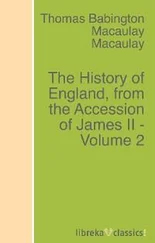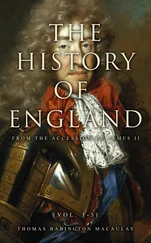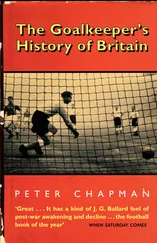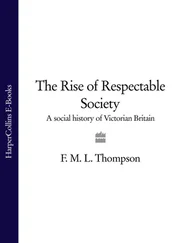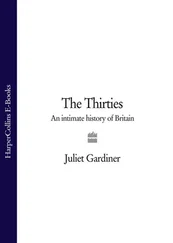The West Saxon edicts that are closest in date to these events are the laws of King Ine (r. 688–726). Clause 20 gives a sense of the sort of welcome that the unfortunate wanderer could expect in eighth-century Wessex: ‘If a man from afar, or a stranger, goes through the woods off the highway and neither calls out nor blows a horn, he may be considered a thief, to be slain or to be redeemed [by paying his wergild (“man-price”)].’7 Britain’s most southerly realm offered cold comfort to the lost.
In the Old English poem Beowulf – composed at some point between the early eighth and the early eleventh century – there can be found, expressed in the Reeve’s own West Saxon tongue, a form of words that we might imagine Beaduheard speaking in his final hours: an echo of a lived experience.8
‘What kind of men are you who arrive
rigged out for combat in coats of mail,
sailing here over the sea-lanes
in your steep-hulled boat? […]
Never before has a force under arms
disembarked so openly – not bothering to ask
if the sentries allowed them safe passage
or the clan had consented […]
So now, before you fare inland
as interlopers, I have to be informed
about who you are and where you hail from.
Outsiders from across the water,
I say it again: the sooner you tell
where you come from and why, the better.’9
In the poem, these words are spoken by the Danish coastguard to the eponymous hero and his men as they arrive from the realm of the Geats (southern Sweden) to lend their aid to Hrothgar, the Danish king. They are formalities, to be understood both by questioner and visitor: the back-and-forth ritual of arrival.
In the real-life counterpart to this scene, however, the newcomers on the Portland beach chose not to participate, not to play the game. Perhaps they did not know the rules.
The travellers, berated in a foreign tongue by an aggressive stranger, are frightened and frustrated – the instinct to fight or flee like a high-pitched whine, raised to intolerable pitch. In the heavy moments that follow, the confrontation develops the hypertension of a shoot-out: a bead of sweat running down the back of a sun-burnt neck, eyes darting left and right as time slows to dream-pace, measured out by the metronomic crashing of the surf. Perhaps a hand flickers towards a sword hilt; perhaps a horse stamps, a cloak billows, a gull shrieks … When the spell finally breaks the violence seems inevitable – preordained – as if only death can bring the world back into balance.
In the end, all that is left, in place of Beowulf’s polite and formal replies, are huddled corpses on the strand, their blood swallowed between stones.
The arrival of these Northmen in Portland – the carbuncle that sprouts from Dorset into the English Channel – established the leitmotifs for Britain’s early interactions with its northern neighbours: unanswered questions and sudden brutality, the fluid identity of the merchant-marauder, the collision of cultures at the margins of the land. For almost three centuries, seaborne marauders would return again and again – sometimes like the inevitable attrition of the tides, dissolving the most vulnerable shores one wave at a time, at others like a mighty storm that smashes sea-walls and wreaks devastation before expending itself exhausted. Sometimes it would seem more like the inexorable flood of a climate apocalypse, the waters rising and rising without respite, washing deep inland and bursting river banks deep in the interior of the land. Everywhere the crimson tide flowed and pounded, the history of these islands would be changed for ever, new channels and shapes scoured and moulded in the clay of British history.
The island that the crew of those three ships blundered into in the reign of King Beorhtric was still far from settling into its familiar modern grooves. Scotland, Wales and England did not exist, and the shifting patchwork of petty kingdoms that made up the political geography of Britain was fractured along cultural, linguistic, religious, geographical and historical lines. Major fault-lines divided those parts of Britain that had once been exposed to intensive Roman colonization from those which had not, those which adhered to Roman and which to Irish forms of Christian liturgy, those who believed their ancestors were British from those who looked to a homeland in Ireland or across the North Sea. Landscape sundered highland zones from lowland zones; language divided speakers of Celtic languages from those who used a Germanic tongue; the sea brought an influx of foreign goods and ideas to some, while shutting others out.
The map of Britain at the end of the eighth century had developed slowly from conditions arising from the decline of the Roman Empire during the fourth century. In Britain, the removal of direct Roman administration and military defence around the year 400 coincided with changes to the cultural orientation of communities along Britain’s eastern seaboard. Increasingly, their centre of gravity shifted from the Mediterranean world to the North Sea. Part of the reason for this was political and economic, but migration also played a major role. People from what is now northern Germany, southern Scandinavia and the Low Countries had been moving into eastern areas of Britain – particularly Kent, East Anglia and England north of the Humber – from at least the early fifth century. The numbers involved, and the nature of the migration, remains fiercely contested, but the impact was undeniable and dramatic.
By the early eighth century, the northern monk Bede was able to write with confidence about an ‘English-speaking people’ who were distinct from the native British. The key distinguishing characteristic of this group – as implied by Bede’s phrase – was their tongue. These were people who spoke a different language from both Romano-British elites (for whom Latin was the ubiquitous written language) and the ‘indigenous’ Britons, who spoke varying forms of a Celtic language known as Common or Old Brittonic (or Brythonic). The newcomers, however, spoke a Germanic language known to modern scholars as ‘Old English’ (or, more rarely these days, as ‘Anglo-Saxon’) which was closely related to the languages spoken in the regions from which migrants across the North Sea had come.
While doubts hover over a great deal of Bede’s narrative, and particularly his migration and conquest narratives (much of which is an elaboration of a vague, tendentious and ideologically motivated sermon written by the British monk Gildas in the sixth century),10 the impact of the English language is not in doubt. Place-names and early vernacular written records attest that English became dominant and widespread at a remarkably early date. Moreover, these English-speakers (whatever their genetic ancestry) had, by Bede’s day, become culturally and linguistically dominant in most of lowland Britain, forming a tapestry of greater and lesser kingdoms which had grown out of an inconsistent pattern of tribal groupings and late Roman administrative districts.
The most northerly of these English-speaking realms was Northumbria – literally the land north of the River Humber. By the late eighth century this kingdom covered a huge swathe of northern Britain, from the Humber to the Forth, cobbled together from a number of former British territories: Deira, Bernicia, Gododdin, Rheged and Elmet. For over a century, Northumbria had represented a high point of post-Roman achievement in scholarship and artistic culture, driven from major centres of learning such as Wearmouth-Jarrow (where Bede wrote, among much else, his Ecclesiastical History of the English People ) and the island monastery of Lindisfarne. This extraordinary cultural flowering was also remarkable for its fusion of British, Irish, Anglo-Saxon and Mediterranean influences. The Lindisfarne Gospels – an illuminated manuscript of breathtaking beauty and craftsmanship – exemplifies the splendour, ingenuity and spontaneity of this northern renaissance, its famous ‘carpet pages’ weaving Celtic, Germanic and Coptic Christian themes into mind-bending symphonies of colour and cultural synthesis.
Читать дальше




